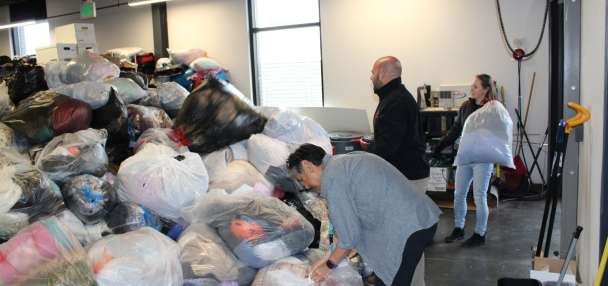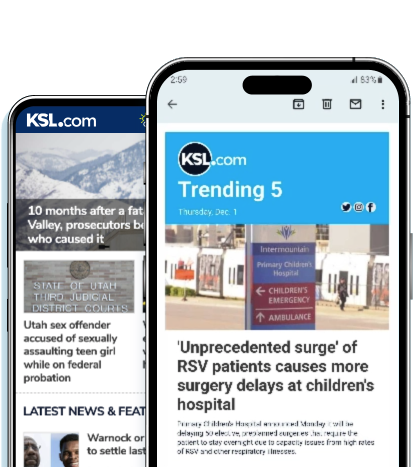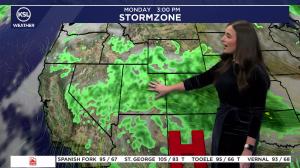Estimated read time: 4-5 minutes
This archived news story is available only for your personal, non-commercial use. Information in the story may be outdated or superseded by additional information. Reading or replaying the story in its archived form does not constitute a republication of the story.
SALT LAKE CITY — Despite a series of recent violent crimes and other incidents at Salt Lake's homeless camps, the city's director of homelessness says small camps have been one of the only options to handle the area's ever-growing number of homeless amid the pandemic.
The city needs 300 more shelter beds for those on the streets, Andrew Johnston, Salt Lake City director of homelessness policy and outreach, said Thursday as he discussed the leaders' plans to address homelessness moving forward during an online event hosted by the Pioneer Park Coalition.
Through COVID-19, allowing camping in smaller groups "made sense" for the city to keep transmission rates down, as well as to ensure stability and safety, according to Johnston.
"And so that is still happening, and you'll see the attempt to try and keep camps smaller, but there are camps," he said.
But if those needed 300 beds are found, "we can handle camping on a very different way than we are right now, I think," Johnston added.
Earlier Thursday, Salt Lake police shot and killed a man suspected of stabbing and critically injuring a woman in Pioneer Park near a homeless encampment after they say he charged toward officers. In mid-May, a man fatally punched another person at a homeless camp near 235 S. Rio Grande Street.
The city's encampments have also prompted conflict between activists and the Salt Lake County Health Department, which has performed regular camp cleanups when they grow too big, too dangerous or become entrenched in an area
When asked to respond to business owners' concerns of crime in those areas and whether the city would consider a 24/7 police foot patrol there, Johnston said discussions are needed about officers' overtime to provide those services.
Salt Lake City Police Chief Mike Brown said in February that the department is continuing work to recover from losing 60 employees last year after the summer riot, numerous protests, calls for defunding the police, controversy over the use of police K-9s for apprehension, a rise in violent crime, low morale and a hiring freeze. While new officers are getting recruited, training and certification takes several months, Brown said.
"The're trying to pull folks into patrol right now from a lot of other specialties, investigations, and other things. And so sometimes that helps with one area, obviously, a presence and dealing with the immediate stuff happening in front of everyone. But it also means sometimes the investigation stuff, that maybe gets to the underlying roots of things happening, may take a little longer. But that would be a good question to talk through with PD as they figure out how to balance their resource issues right now," Johnston said.
Downtown Ambassadors, a pilot program, also serves as a "presence that helps deter larger numbers," he said. But the program is set to lose its funding in 2022, he said, suggesting that it might need to continue.
Although short-term, temporary housing needs to be addressed, the most important factor moving forward is housing, Johnston said.
"And we've known that for a lot of years. As a state, we did a great job 15, 20 years ago going on now of identifying that there were subpopulations in our shetler and unsheltered homeless folks in the city and the county, and building specific housing to their needs, which freed up the shelter system," he said.
"When we talk about housing, it's not just a platitude, it's not just a simple answer to a complex question," he added.
The "housing first" isn't the approach because it solves the issue completely, but it paves the way for individuals to receive the services they need. If all efforts aren't focused toward long-term housing, Johnston said short-term solutions will become "permanent."
"And when you look at a lot of other cities, you'll see a lot of these have become permanent in some cases where they have no faith at all that housing's going to happen. And so they're turning tents and these places into permanent places to be, which I'm not sure anybody really wants that to be the permanent answer," Johnston said.
He said the dilemma lies in creating "multiple tracts" — "keeping the focus on housing continually and not just for a short period of time. ... It's got to be a consistent process," as well as addressing immediate needs for those on the street.
While Salt Lake City needs 300 more beds, the county is just under 3,000 units for those who are either in shelters, camping, and going through shelters periodically, Johnston noted.
"We're probably going to need 1,400 per year going forward just to keep up on the numbers as they seem to increase. Our population as a whole keeps increasing like this because of the strong economy, and a tight housing market," Johnston said.









